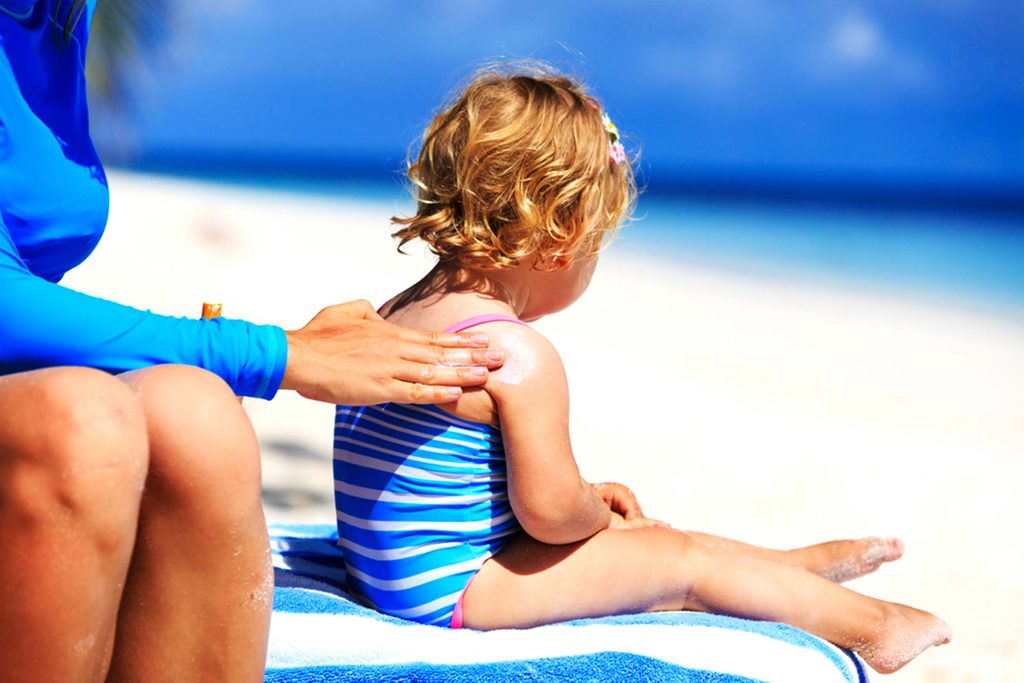You and Your Child Should Never, Ever Use the Same Sunscreen—Here’s Why
Updated: Jun. 08, 2017
It might be easier to use the same bottle, but you'll be doing more harm than good.
 Any drugstore’s sun protection aisle can leave people confused and overwhelmed. A seemingly endless variety of sunscreens beckon: Water-resistant, exercise-ready, sprays, creams, blocks, SPF-loaded sticks, and, of course, kid-specific formulas. But wait a minute—why do kids need their own type of sunscreen? It turns out the kids-and-sunscreen issue is more complicated than we realized.
Any drugstore’s sun protection aisle can leave people confused and overwhelmed. A seemingly endless variety of sunscreens beckon: Water-resistant, exercise-ready, sprays, creams, blocks, SPF-loaded sticks, and, of course, kid-specific formulas. But wait a minute—why do kids need their own type of sunscreen? It turns out the kids-and-sunscreen issue is more complicated than we realized.
First, infants under six months shouldn’t hang in the sun much at all. “Babies need to have physical protection such as protective hats and clothing,” explains Doris Day, MD, a New York dermatologist. “They have a lower body surface-to-volume ratio, so anything that’s applied topically has a greater chance of penetrating and impacting them systemically. Once they reach about six months it’s considered safe to use a physical protection sunscreen like those containing zinc or titanium, and always choose SPF 30 or higher.”
The Skin Cancer Foundation also touts zinc and titanium as proven, safe sunscreen ingredients for little ones. According to their website, “titanium dioxide and zinc oxide are physical sunscreens with a long history of use, and considered two of the most protective broad-spectrum ingredients.”
Dr. Day points out that parents may want to avoid formulations that contain ingredients such as parabens or preservatives; the skin can absorb the chemicals and could cause a reaction. Other specialists feel even more strongly that parents should stick to the barrier screens. “The chemically-based screens are absorbed into the skin in order to protect the skin from UV rays,” says Norman Rowe, MD, a New York City-based board-certified plastic surgeon with years of experience dealing with sun-damaged skin. “These chemicals can be harmful in high doses [high SPF factors] to infants and children.”
Yes, you have to be careful, warns Dr. Rowe, but not using sunscreen is the riskiest move. “Most of the skin damage I see in patients occurred before the patient was 20 years of age. The UV rays damage our skin’s ability to make new collagen which is the building block of new, healthy, skin. Zinc oxide blocks are generally the best as they are not absorbed by the skin, making it one of the safest sunscreens for kids.” Check out the Environmental Working Group’s list of top children’s sunscreens to find a block that will work for your kids.